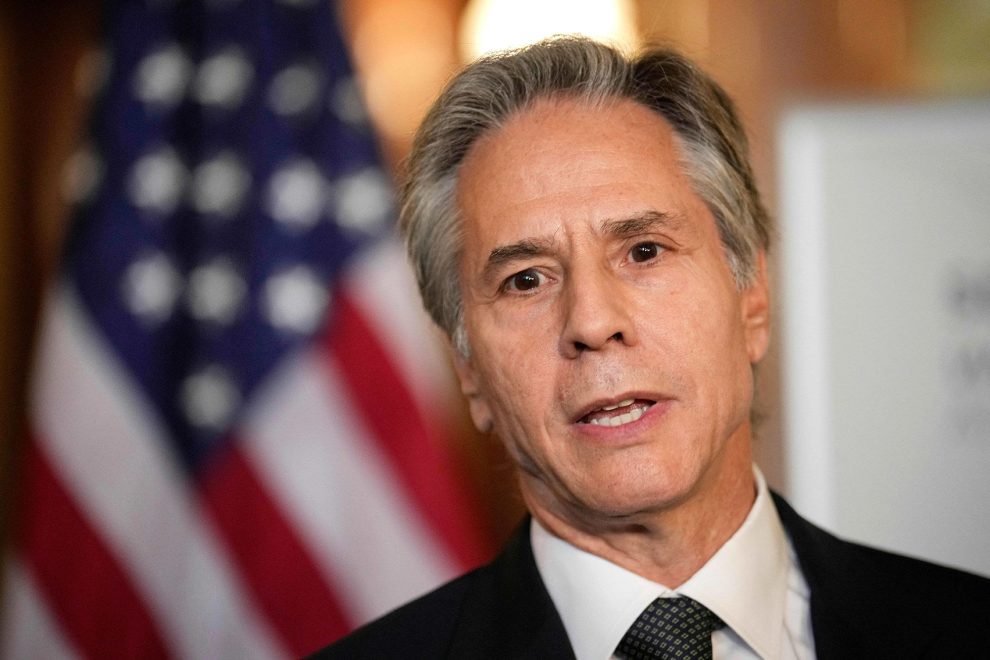US Secretary of State Antony Blinken’s visit to Central Asia at the end of February drew a lot of attention. The top diplomat’s trip came almost exactly one year after Russia launched its massive invasion of Ukraine, a move that disrupted Central Asia’s traditional trade routes and caused anxieties in some of the region’s states over Moscow’s future intentions towards them.
Russia predictably saw the visit as the latest US attempt to drive a wedge into Central Asian-Russian relations.
Russian Deputy Foreign Minister Mikhail Galuzin warned the Central Asian states ahead of Blinken’s visit that the US experience in Afghanistan ended in “chaos and ruins” and in a multipolar world “there is no place for the democratisation experiments of Washington….”
However, officials in Kazakhstan and Uzbekistan, the two countries Blinken visited, seemed anxious to meet with him publicly to show they have other powerful partners besides China and Russia. Blinken’s statements about supporting Kazakhstan and Uzbekistan’s sovereignty and territorial integrity were no doubt welcomed by Astana and Tashkent, especially as they are the only Central Asian states that have publicly spoken out in support of Ukraine’s territorial integrity.
The approach of the United States to Central Asia is not about spending anything like the amount of money that China and Russia put into the region.
Some parties scoffed at the additional $25mn in aid that Blinken promised when in Astana he met with the foreign ministers of Kazakhstan, Kyrgyzstan, Tajikistan, Turkmenistan and Uzbekistan.
That sum is of course far lower than the billions of dollars that China and Russia have poured into Central Asia over the last couple of decades, but the American money is aimed at something rather different to what Russia and China are trying to achieve with their finance.
Russia and China, both of which directly border Central Asia, use their economic influence with the objective of binding Central Asia to them.
Russian and Chinese companies fund and build large infrastructure projects across the region and, as a result, the Central Asian states become deep in debt to them and dependent upon the giant neighbours for help in maintaining the projects.
That gives Moscow and Beijing leverage over their neighbours in Central Asia. Critics are wont to speak of “debt-trap diplomacy”.
One example of the leverage in action was the voting at the UN to condemn Russia’s war in Ukraine, or China’s campaign against Muslims in its western Xinjiang Region that borders Kazakhstan, Kyrgyzstan and Tajikistan. The Central Asian states abstained during these votes, except for remote Turkmenistan which simply does not vote at all on these topics.
The funds Blinken pledged are intended to help the Central Asian states become more independent from Moscow and Beijing, but not necessarily closer to Washington. As things stand in Central Asia, with Russia struggling to maintain influence due to its draining engagement in Ukraine, Washington probably sees the region as in need of only a prod in the right direction, rather than anything like a shove. If Russia’s fortunes unravel, it might not take much for the Central Asian nations to find a better road in their economic and political orientation.
Blinken said the $25mn would go towards the diversification of Central Asia’s trade routes and the creation of new job opportunities inside Central Asia.
Two of the biggest impacts on Central Asia of Russia’s war on Ukraine are that it has forced the region’s states to pay more attention to non-Russian trade corridors and has reinforced their need to find new economic partners.
Expanding non-Russian trade routes was a priority for Central Asia in 2022 and significant progress was made, but much remains to be done, particularly in finding alternative networks for trade with Europe to fill gaps left by diminished capacity through Russian corridors.
Expanding the Trans-Caspian International Transport Route (TITR), also known as the Middle Corridor, that connects China to Europe, avoiding Russia, is now the focus of a cooperation between the Central Asian states, Azerbaijan, Georgia and Turkey.
Some of the US money is headed toward TITR and similar transportation networks with the goal of giving the Central Asian states improved, non-Russian trade routes.
Better connections with Turkey, Europe and the Middle East will help balance trade relations with Russia and China.
Trade routes connecting Europe and the Middle East to China through Central Asia will also bring the Central Asian states added revenue from transit fees.
US-funded programmes to create new jobs in Central Asia stand in stark contrast to Russian programmes for attracting migrant labourers from Central Asia to work in manual labour jobs usually marked by low pay.
China’s impact on Central Asia’s labour market is limited to temporary employment for locals at sites in Central Asia where Chinese companies are working, or for those who were brought to China to study, employment in lower- or mid-level management positions in Chinese companies or as translators at work sites.
The $25mn might not sound like much money, but it carries no debt and is targeted at long-term benefits for Central Asia economically and is geared towards solidifying their sovereignty.
Additionally, it sends a message to the Central Asian governments that so long as their authoritarian form of rule continues, they cannot expect to receive large amounts of funding from the US government.
Source : BNE












